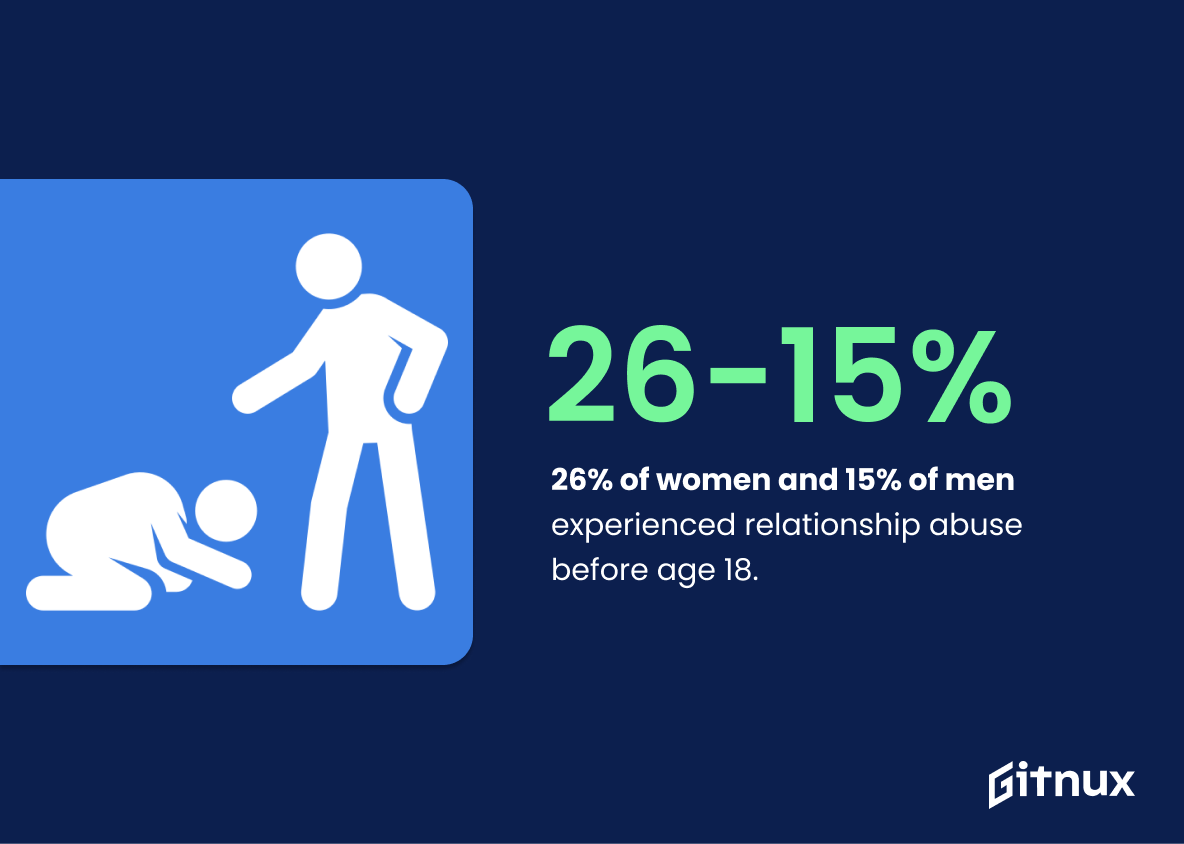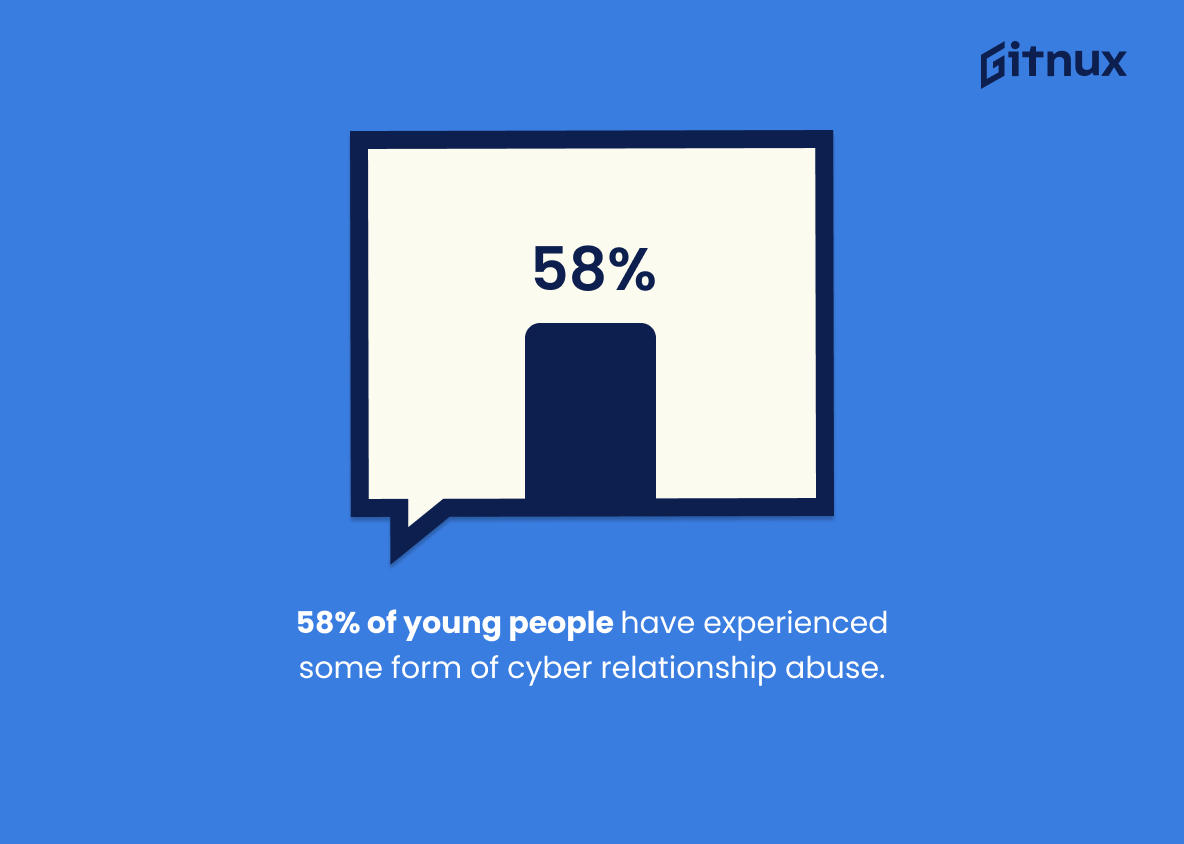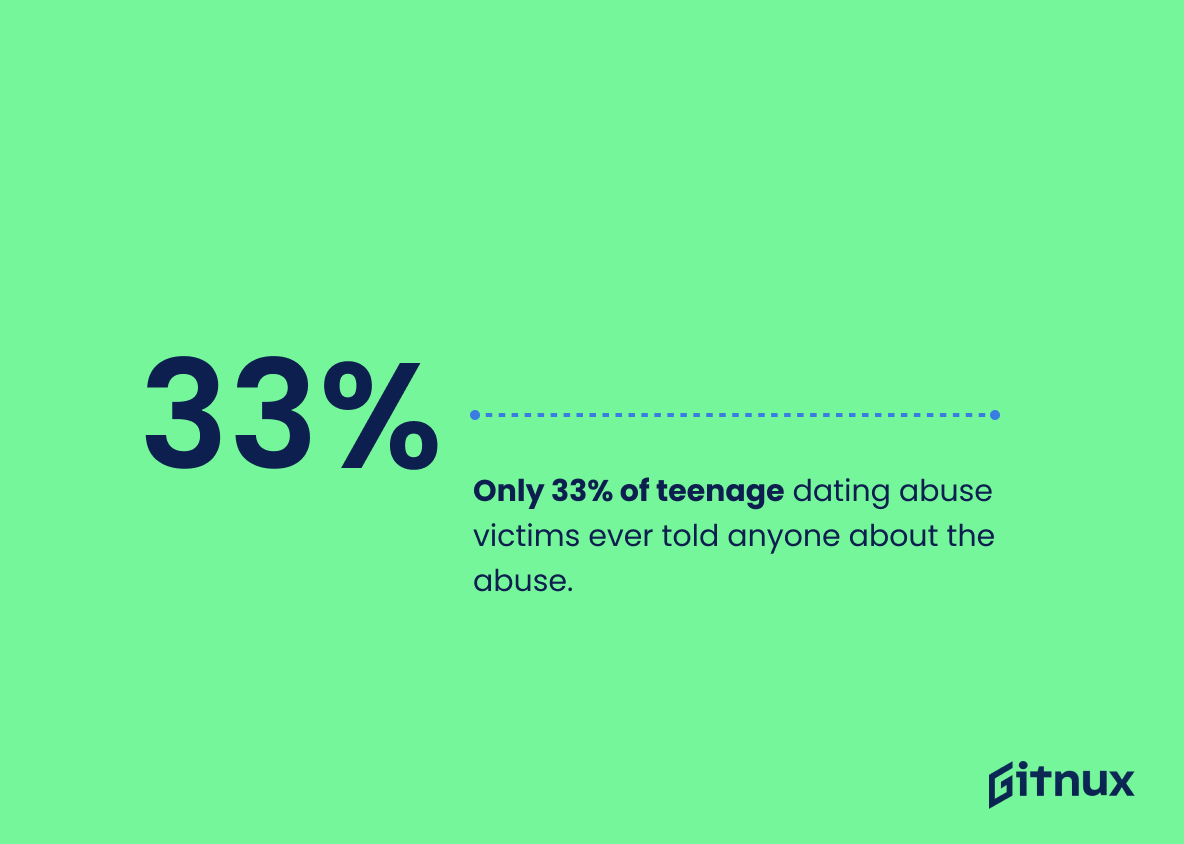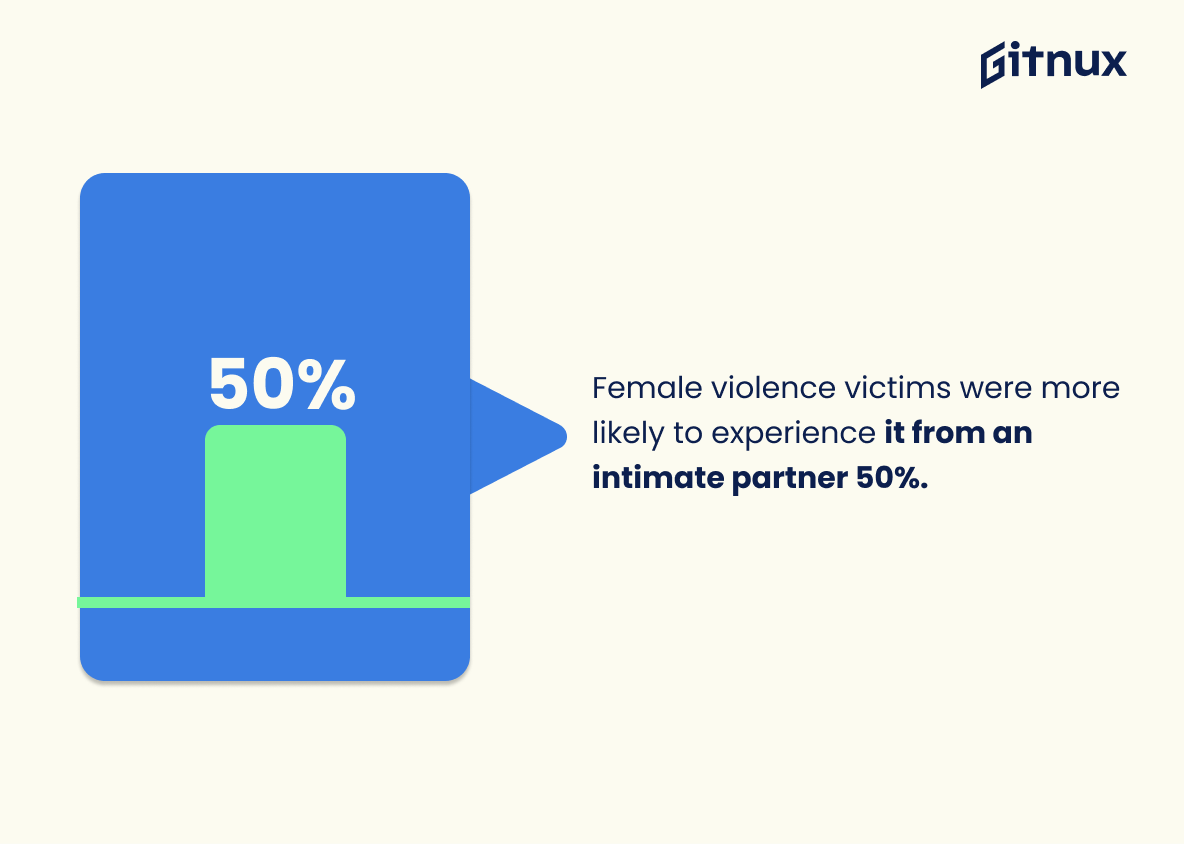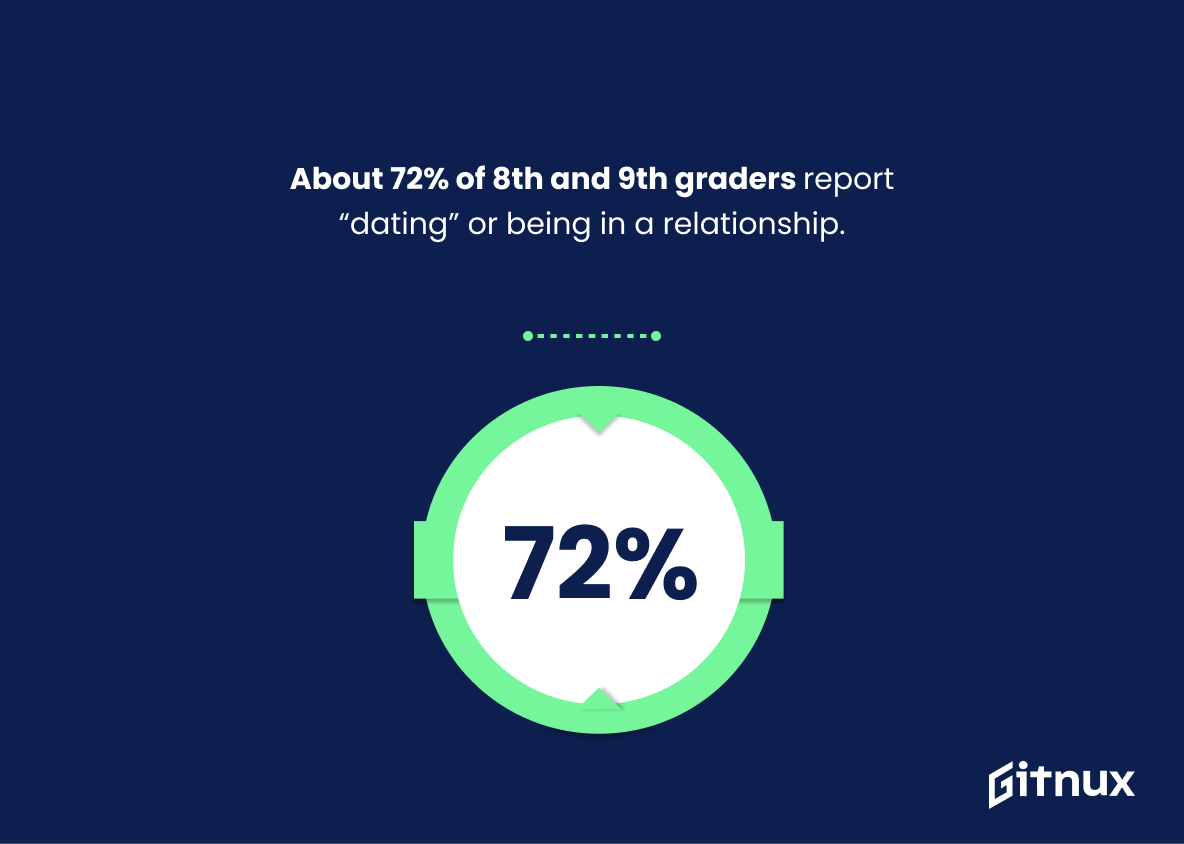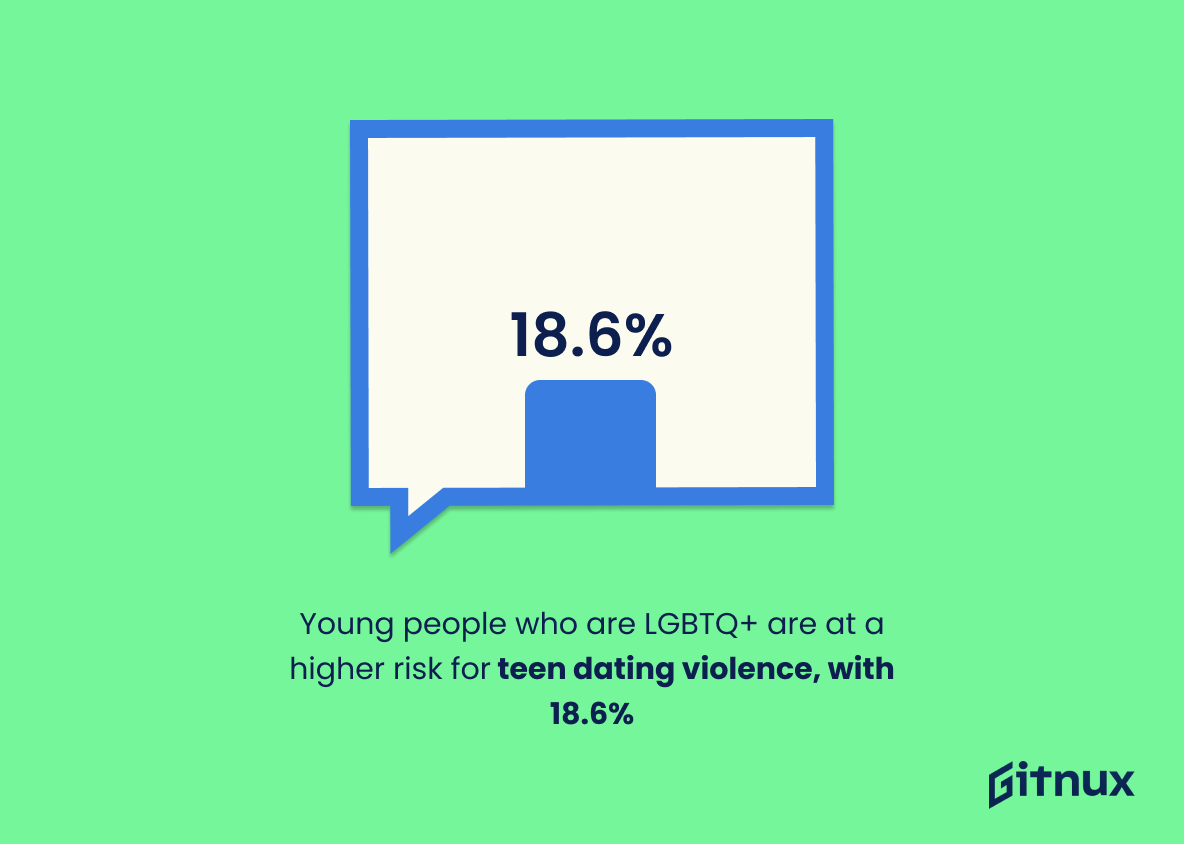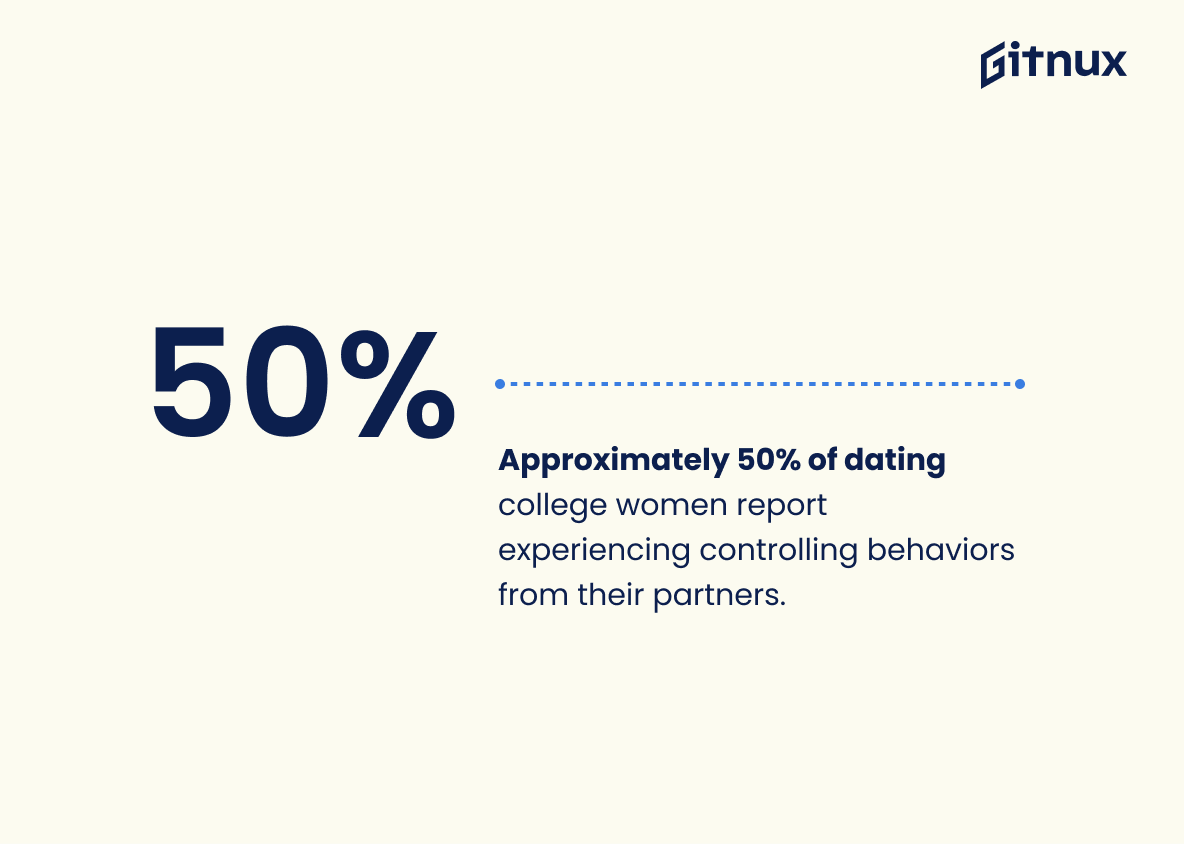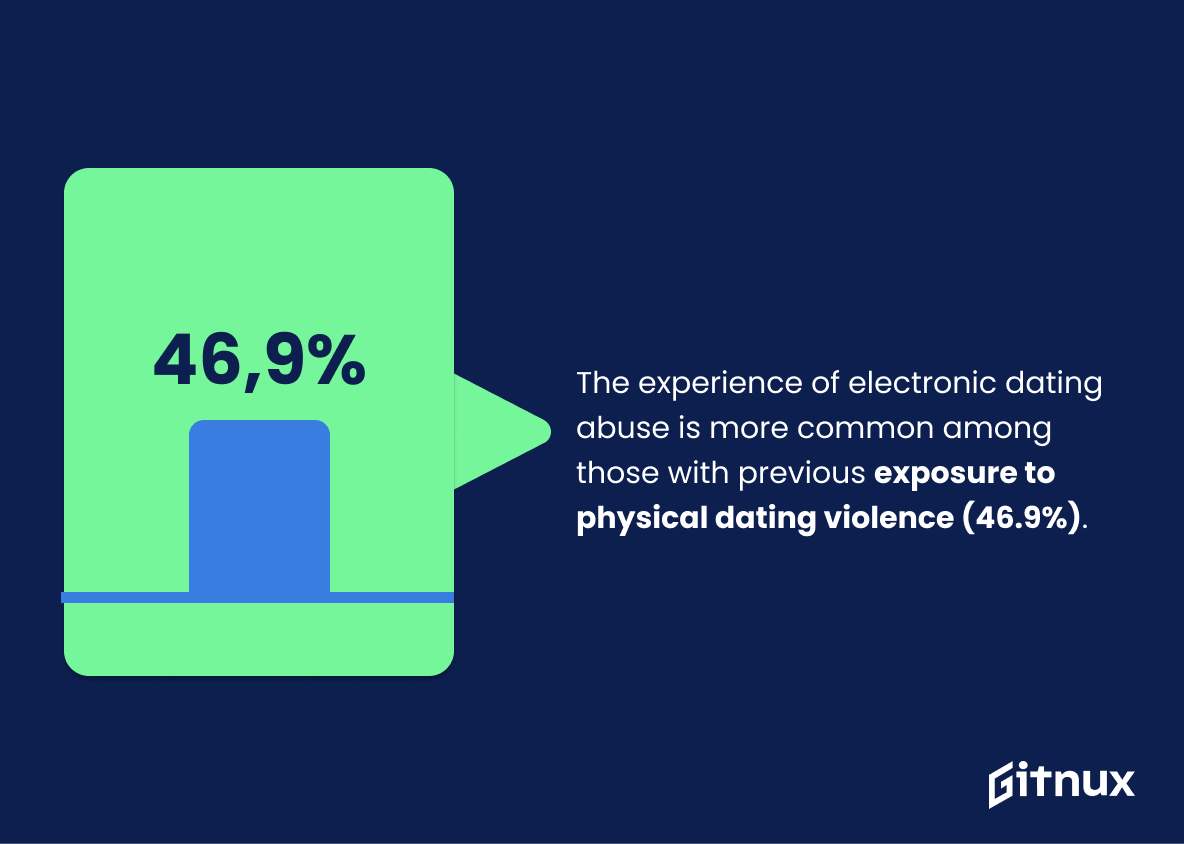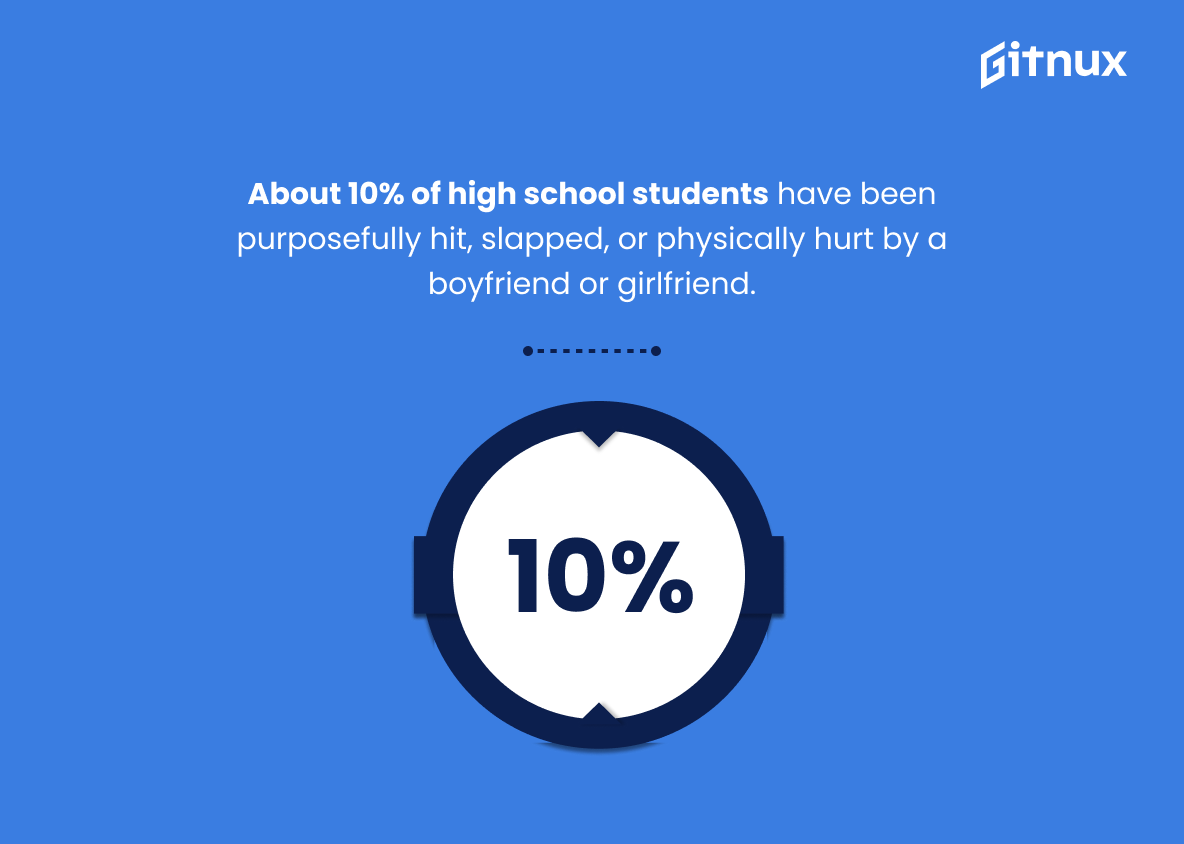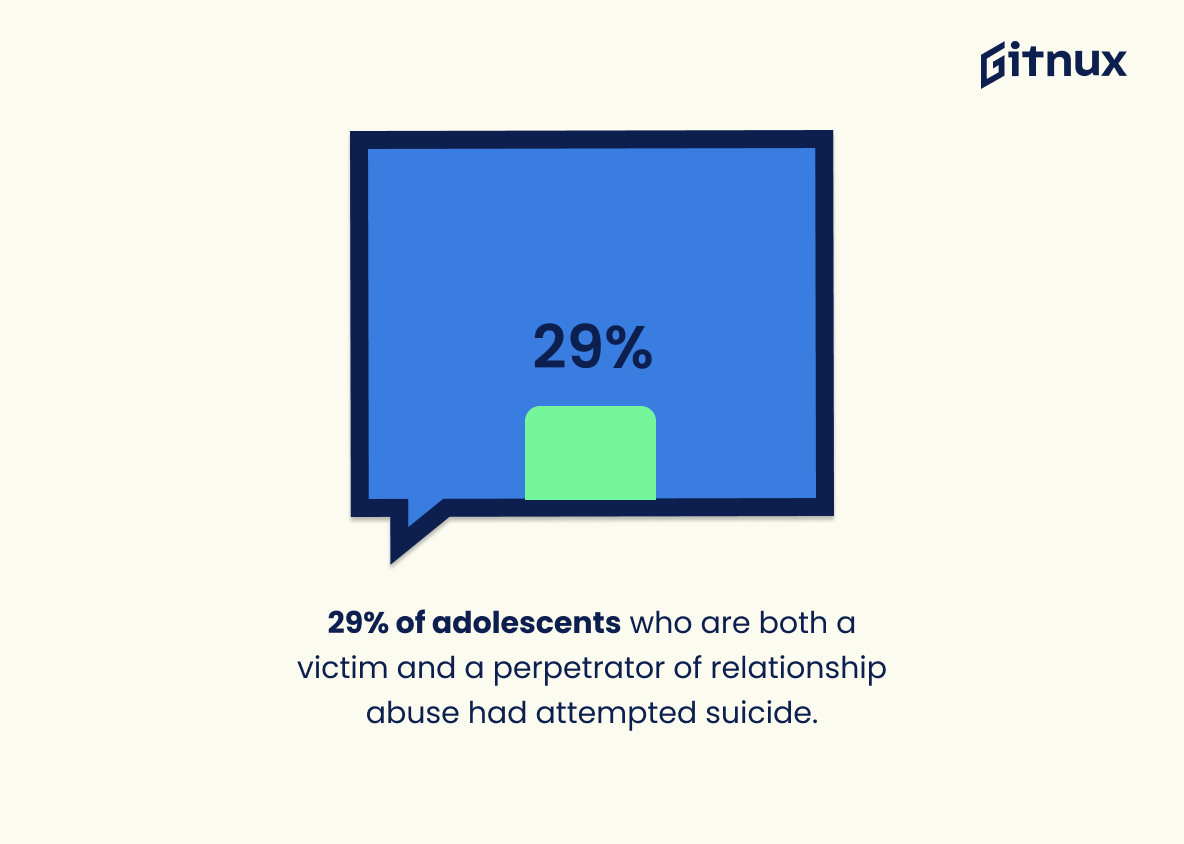Teen relationship abuse is a serious issue that affects millions of young people in the United States. Unfortunately, many teens are unaware of the prevalence and severity of this problem. This blog post will explore some alarming statistics about teen relationship abuse to help raise awareness and encourage action against it. We’ll look at data from various sources on physical, emotional, sexual, cyber-based dating violence as well as stalking among teenagers across different age groups. By understanding these facts and figures we can better understand how to prevent such abuses from occurring in our communities.
This statistic is a stark reminder of the prevalence of teen relationship abuse in the United States. It is a sobering reminder that physical abuse in dating relationships is a serious issue that affects far too many young people. It is a call to action for parents, educators, and other adults to be aware of the signs of teen relationship abuse and to take steps to ensure that all teens are safe and respected in their relationships.
43% of college women reported experiencing violent or abusive dating behaviors.
This statistic is a stark reminder of the prevalence of violent and abusive dating behaviors among college women. It serves as a call to action for parents, educators, and other adults to be aware of the risks that young people face in their relationships and to take steps to ensure their safety. It also highlights the need for more education and resources to help young people recognize and respond to signs of abuse in their relationships.
Teen Relationship Abuse Statistics Overview
26% of women and 15% of men who suffered relationship abuse in their lifetimes first experienced it before the age of 18.
This statistic is a stark reminder of the prevalence of relationship abuse among young people. It highlights the need for greater awareness and education about the signs of abuse, as well as the importance of providing support to those affected by it. It also serves as a call to action for parents, teachers, and other adults to be more vigilant in recognizing and intervening in situations of abuse.
58% of young people have experienced some form of cyber relationship abuse.
This statistic is a stark reminder of the prevalence of cyber relationship abuse among young people. It highlights the need for greater awareness and education about the issue, as well as the need for more resources to help those affected. It also serves as a call to action for parents, educators, and other adults to take steps to protect young people from this form of abuse.
Only 33% of teenage dating abuse victims ever told anyone about the abuse.
This statistic is a stark reminder of the prevalence of teen relationship abuse and the need for greater awareness. It highlights the fact that many victims of abuse are not speaking out, and that there is a need for more education and support for those affected. It also serves as a call to action for parents, teachers, and other adults to be more aware of the signs of abuse and to take steps to ensure that teens in their care are safe.
Female victims of violence were more likely to experience violence from an intimate partner (50%) than from friends/acquaintances (26%) or strangers (24%).
This statistic is a stark reminder of the prevalence of intimate partner violence among female victims of violence. It highlights the need for greater awareness and education about the dangers of teen relationship abuse, particularly when it comes to intimate partners. It also serves as a call to action for parents, teachers, and other adults to be more vigilant in monitoring and intervening in potentially abusive relationships.
About 72% of 8th and 9th graders report “dating” or being in a relationship.
This statistic is a stark reminder of the prevalence of teen relationships, and the potential for relationship abuse in these situations. It highlights the need for education and awareness around the issue of teen relationship abuse, and the importance of providing resources and support to young people in relationships.
18% of women and 1 in 10 men first experienced stalking between the ages of 11-17.
This statistic is a stark reminder of the prevalence of stalking among young people, particularly among women. It highlights the need for greater awareness of the issue and for more resources to be devoted to helping those affected by stalking in this age group. It also serves as a warning to parents and educators to be vigilant in monitoring the relationships of young people and to be aware of the signs of stalking.
Young people who are LGBTQ+ are at a higher risk for teen dating violence, with 18.6% of LGBTQ+ adolescents experiencing physical violence.
This statistic is a stark reminder of the disproportionate risk that LGBTQ+ adolescents face when it comes to teen dating violence. It highlights the need for greater awareness and education around the issue, as well as the need for more resources to support those affected. It is a call to action for us to do more to ensure that all young people can enjoy healthy, safe relationships.
Approximately 50% of dating college women report experiencing controlling behaviors from their partners.
This statistic is a stark reminder of the prevalence of controlling behaviors in college dating relationships. It highlights the need for increased awareness and education about the signs of relationship abuse, as well as the importance of providing support and resources to those affected. It also serves as a call to action for college administrators, faculty, and staff to take proactive steps to ensure the safety and well-being of their students.
Teens who have experienced relationship abuse themselves are twice as likely to practice unhealthy behaviors like binge drinking.
This statistic is a stark reminder of the far-reaching consequences of teen relationship abuse. It highlights the need for greater awareness and education about the issue, as well as the importance of providing support to those affected by it. It also serves as a warning to parents and guardians to be vigilant in monitoring their teens’ relationships and to take any signs of abuse seriously.
The experience of electronic dating abuse is more common among those with previous exposure to physical dating violence (46.9%).
This statistic is a stark reminder that physical dating violence can have long-term effects on teens. It highlights the importance of intervening early to prevent physical dating violence from escalating into more serious forms of abuse, such as electronic dating abuse. It also serves as a warning that teens who have experienced physical dating violence may be more vulnerable to electronic dating abuse.
About 10% of high school students have been purposefully hit, slapped, or physically hurt by a boyfriend or girlfriend.
This statistic is a stark reminder of the prevalence of teen relationship abuse, and serves as a call to action for parents, educators, and other adults to be aware of the signs of abuse and to take steps to prevent it. It is a sobering reminder that even in the most intimate of relationships, violence can occur, and that it is important to be vigilant in protecting our youth.
22% of teenage girls who have been in relationships report having been the victim of physical violence.
This statistic is a stark reminder of the prevalence of physical violence in teenage relationships. It highlights the need for greater awareness and education about the dangers of relationship abuse, as well as the importance of providing support to those affected. It is a call to action for parents, teachers, and other adults to take steps to ensure that young people are safe and protected from violence in their relationships.
29% of adolescents who are both a victim and a perpetrator of relationship abuse had attempted suicide.
This statistic is a stark reminder of the devastating effects of teen relationship abuse. It highlights the fact that not only are adolescents suffering from the physical and emotional trauma of being a victim of abuse, but they are also struggling with the guilt and shame of being a perpetrator. The fact that so many of these adolescents have attempted suicide is a heartbreaking indication of the severity of the issue.
Conclusion
The statistics presented in this blog post demonstrate the prevalence of teen relationship abuse and its devastating effects. From these numbers, it is clear that teens are at a high risk for experiencing physical, emotional, sexual or cyber abuse from their partners. Furthermore, many parents remain unaware of the issue or do not discuss it with their children. It is essential to raise awareness about teen dating violence so that young people can be empowered to seek help if they need it and prevent further harm from occurring.
References
0. – https://www.www.ncbi.nlm.nih.gov
1. – https://www.www.ncjrs.gov
2. – https://www.www.bjs.gov
3. – https://www.www.cdc.gov
4. – https://www.www.breakthecycle.org
5. – https://www.link.springer.com
